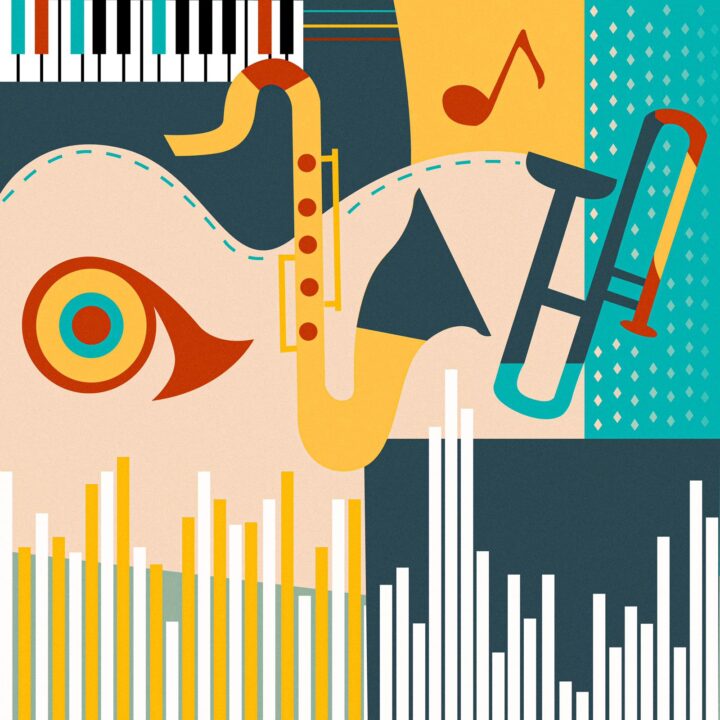K-12 musical instruction and performances may look different this fall, but the beat will go on thanks to creativity and music-making technologies, says a Purdue University expert.
“There are so many online tools out there that music educators can use to bring students together during the COVID-19 pandemic,” said Christopher Cayari, assistant professor of music education in the Patti and Rusty Rueff School of Design, Art, and Performance at Purdue. “One option is for programs to host online concerts or performances through the recording and mixing of virtual ensembles and individual performances.”
Platforms like Soundtrap by Spotify and Protools are great resources for sound editing. Other softwares like Flipgrid and Adobe Premiere do video editing, while Acapella by PicPlayPost and BandLab are compilation apps available for mobile devices to create musical productions amid the pandemic. Cayari encourages music educators to experiment with these softwares to make music with their students, and the skills they develop while distance learning can then be carried into physical classrooms after the pandemic is over.
“Putting together a virtual ensemble can be difficult, but I have seen many tech-savvy educators or sound engineers helping music educators create virtual performances,” Cayari said. “Students can also collaborate with one another to create anything from karaoke videos to vlog projects. The great thing about technology is that students can collaborate with others without geographical restraint.”
For the last 10 years, Cayari has researched online music making and virtual performances, focusing most of his attention on YouTube and how the platform has changed the way people create, consume and share music. According to Cayari, online music-making projects, research, technologies and literacies occur within three dispositions:
- Do-it-yourself: “There are many avenues for do-it-yourself projects thanks to social media or audio recording websites like SoundCloud or Bandcamp. This method is great for students because it allows them to learn for themselves about the aspects that go into music recording projects.”
- Do-it-with-others: “Online music making isn’t a new concept. For many years, people have been collaborating with others to create music and connect with one another through the production of music.”
- Do-it-for-others: “These type of performances are organized projects where individuals submit their own performances and someone else pulls it all together. Everyone from the organizer to the performers to the editors have a hand in creating something for the enjoyment of others.”
This week, a special issue of the Journal for Popular Music Education, co-edited by Cayari and Janice Waldron from Windsor University in Ontario, Canada, was released that focuses on learning, performing and teaching, which includes international research about how music teachers are using the internet to teach students.
About Purdue University
Purdue University is a top public research institution developing practical solutions to today’s toughest challenges. Ranked the No. 6 Most Innovative University in the United States by U.S. News & World Report, Purdue delivers world-changing research and out-of-this-world discovery. Committed to hands-on and online, real-world learning, Purdue offers a transformative education to all. Committed to affordability and accessibility, Purdue has frozen tuition and most fees at 2012-13 levels, enabling more students than ever to graduate debt-free. See how Purdue never stops in the persisten






